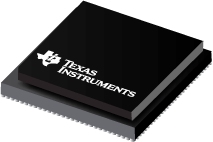PDF, 57 Kb, Revision: A, File published: May 19, 2017
PDF, 54 Kb, File published: Oct 3, 2016
This document is a collection of frequently asked questions (FAQ) on running the NDK examples on the KeyStoneв„ў family of devices.
PDF, 3.2 Mb, File published: Oct 9, 2014
This document describes the organization, structure, and proper usage of the TI serializer and deserializer (SerDes) IBIS-AMI models for Keystone DSP Hyperlink interface.
PDF, 4.8 Mb, File published: Oct 9, 2014
This document describes the organization, structure, and proper usage of the TI serializer and deserializer (SerDes) IBIS-AMI models for Keystone DSP PCIe interface.
PDF, 590 Kb, File published: Oct 31, 2012
The goal of KeyStone I SerDes collateral material is to make system implementation easier for the customer by providing the system solution. For these SerDes-based interfaces, it is not assumed that the system designer is familiar with the industry specifications, SerDes technology, or RF/microwave PCB design. However, it is still expected that the PCB design work will be supervised by a knowledge
PDF, 1.7 Mb, Revision: C, File published: Sep 15, 2013
PDF, 114 Kb, Revision: E, File published: Oct 28, 2016
The initialization of the DDR3 DRAM controller on KeyStone I DSPs is straightforward as long as the proper steps are followed. However, if some steps are omitted or if some sequence-sensitive steps are implemented in the wrong order, DDR3 operation will be unpredictable.All DDR3 initialization routines must contain the basic register writes to configure the memory controller within the DSP
PDF, 245 Kb, Revision: A, File published: Apr 25, 2011
PDF, 2.2 Mb, Revision: A, File published: May 1, 2004
Application Note 1281 Bumped Die (Flip Chip) Packages
PDF, 138 Kb, File published: Apr 13, 2016
The serializer-deserializer (SerDes) performs serial-to-parallel conversions on data received from a peripheral device and parallel-to-serial conversion on data received from the CPU. This application report explains the SerDes transmit and receive parameters tuning, tools and some debug techniques for TI Keystone I and Keystone II devices.
PDF, 320 Kb, File published: Dec 13, 2011
PDF, 1.5 Mb, File published: Nov 9, 2010
PDF, 585 Kb, File published: Nov 9, 2010
PDF, 20 Kb, Revision: A, File published: Nov 10, 2010
The C6000 compiler tools support a new ELF-based ABI named EABI. Prior to this time, the compiler only supported a single ABI, which is now named COFF ABI. The following compelling best-in-class features are available under the C6000 EABI:GeneralZero-init globals: “int gvar;” gets set to 0 before main runs.Dynamic linking: Add code to a running system.Native ROM
PDF, 582 Kb, Revision: B, File published: Jun 5, 2014
PDF, 1.8 Mb, Revision: B, File published: Aug 29, 2012
As application complexity continues to grow, we have reached a limit on increasing performance by merely scaling clock speed. To meet the ever-increasing processing demand, modern System-On-Chip solutions contain multiple processing cores. The dilemma is how to map applications to multicore devices. In this paper, we present a programming methodology for converting applications to run on multicore
PDF, 530 Kb, File published: Apr 12, 2017
The TI TMS320C6000в„ў Digital Signal Processors (DSPs) have many architectural advantages that make them ideal for computation-intensive real-time applications that are commonly used in audio processing application. This application notes describes Audio Benchmark Starterkit software that is intended to provide an easy and quick way to benchmark key audio functions on C66x and C674x DSP device
PDF, 62 Kb, File published: Jan 13, 2016
This application report provides benchmarks for the C674x DSP core, the C66x DSP core and the ARMВ®CortexВ®-A15 core. This document also shows how to reproduce these benchmarks on specific hardware platforms.
PDF, 1.6 Mb, Revision: B, File published: Aug 13, 2015

